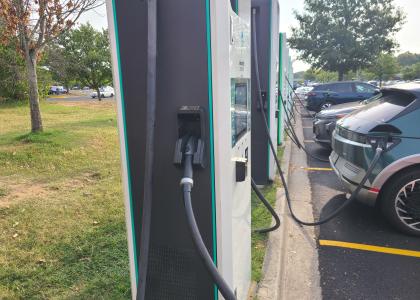On Wednesday, a group of Ohio policymakers released their recommendations to indefinitely freeze the state's clean energy and energy efficiency targets. Their misinformed recommendations, if implemented, would once again deliver a major setback to Ohio energy bill payers and the state's clean energy economy.
A cost-benefit analysis that ignores the benefits
The group, the Energy Mandates Study Committee—a special committee created in SB 310 to specifically examine cost-benefits of the energy efficiency resource standard (and renewable portfolio standard)—gets several things wrong about energy efficiency. First, while the committee’s initial task was to complete a cost-benefit analysis, the study includes absolutely no analysis of the benefits from investments in energy efficiency. They only look at the costs. ACEEE examined the benefits of energy efficiency in Ohio back in 2012, and found that continuing Ohio’s efficiency targets could save customers almost $5.6 billion in avoided energy expenditures, reduced wholesale energy prices, and capacity prices. And utilities in Ohio have extensively analyzed the costs and benefits of energy efficiency. By not basing their recommendations on an actual cost-benefit analysis of energy efficiency, the committee's study is shockingly incomplete.
Incentives alone are not enough to achieve high savings for Ohio
Ironically, the committee seems to recognize the value of efficiency, stating in their report that "the Study Committee does see great value in continuing with energy efficiency so that Ohio ratepayers will pay less for electricity and the state will use less electricity overall." But the committee then goes on to recommend voluntary programs and energy incentives for utilities to invest in efficiency instead of targets. Again, the committee fails to look at the evidence in developing their recommendation.
Yes, energy efficiency performance incentives for utilities are an effective tool if structured well (as we recently examined in ACEEE’s Beyond Carrots for Utilities report). However, the tools by themselves have been far less successful than specific energy efficiency targets at driving high levels of efficiency, as I wrote in a paper earlier this year, Policies Matter: Creating an Energy-Efficient Utility of the Future.
Utility energy efficiency performance incentives deliver the most savings for energy-bill payers when aligned with long-term, concrete targets, such as those in the original Ohio legislation. Without the targets, customers are vulnerable to large swings in program offerings and the resulting benefits, and the business community faces uncertainty in the state's commitment to invest in energy efficiency.
The results from voluntary programs in other states have not been promising. In 2014, all of the top 18 electricity-saving states in ACEEE’s State Energy Efficiency Scorecard had mandatory savings targets in place (including Ohio). Meanwhile, states with voluntary standards ranked much lower in terms of electricity savings—for example, Missouri (33rd), Kentucky (34th), Tennessee (36th), and Virginia (47th). The trend of top savings occurring only in states with mandatory goals has generally held true for at least the past five years.
Emerging technologies are creating huge potential for energy savings targets
The energy efficiency targets in Ohio's original legislation are achievable and cost-effective, as we examined this summer in an analysis on energy efficiency potential in Ohio. We reviewed energy efficiency potential studies by the four investor-owned utilities (IOUs) in the state, which showed that the utilities were already planning on significant, cost-effective energy savings from efficiency programs. While the utility studies identified large amounts of untapped energy potential in the state through the next 10–20 years, they often underestimated the full efficiency potential in certain areas. For example, several emerging technologies and best practice strategies to encourage customer participation can yield significant additional energy savings, but were not fully considered in the studies. A recent ACEEE analysis further examines those emerging technologies and strategies in more depth, finding that 18 measures alone—including reduction of plug loads, conservation voltage reduction, and smart manufacturing— could collectively save up to 31% of total projected electricity use in the year 2030 .
The committee's recommendations are now in the hands of the Ohio General Assembly, which will decide whether to take them up in legislation. We hope they consider the evidence and the facts in their decisions—that energy efficiency delivers, and that policies matter. Setting concrete utility targets is the still best way to deliver energy and costs savings for Ohio customers.



